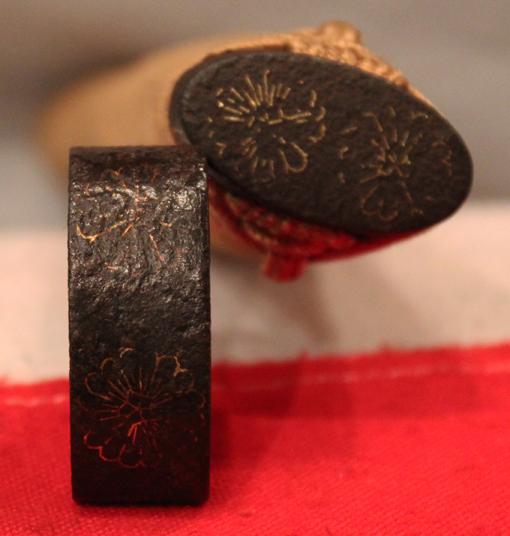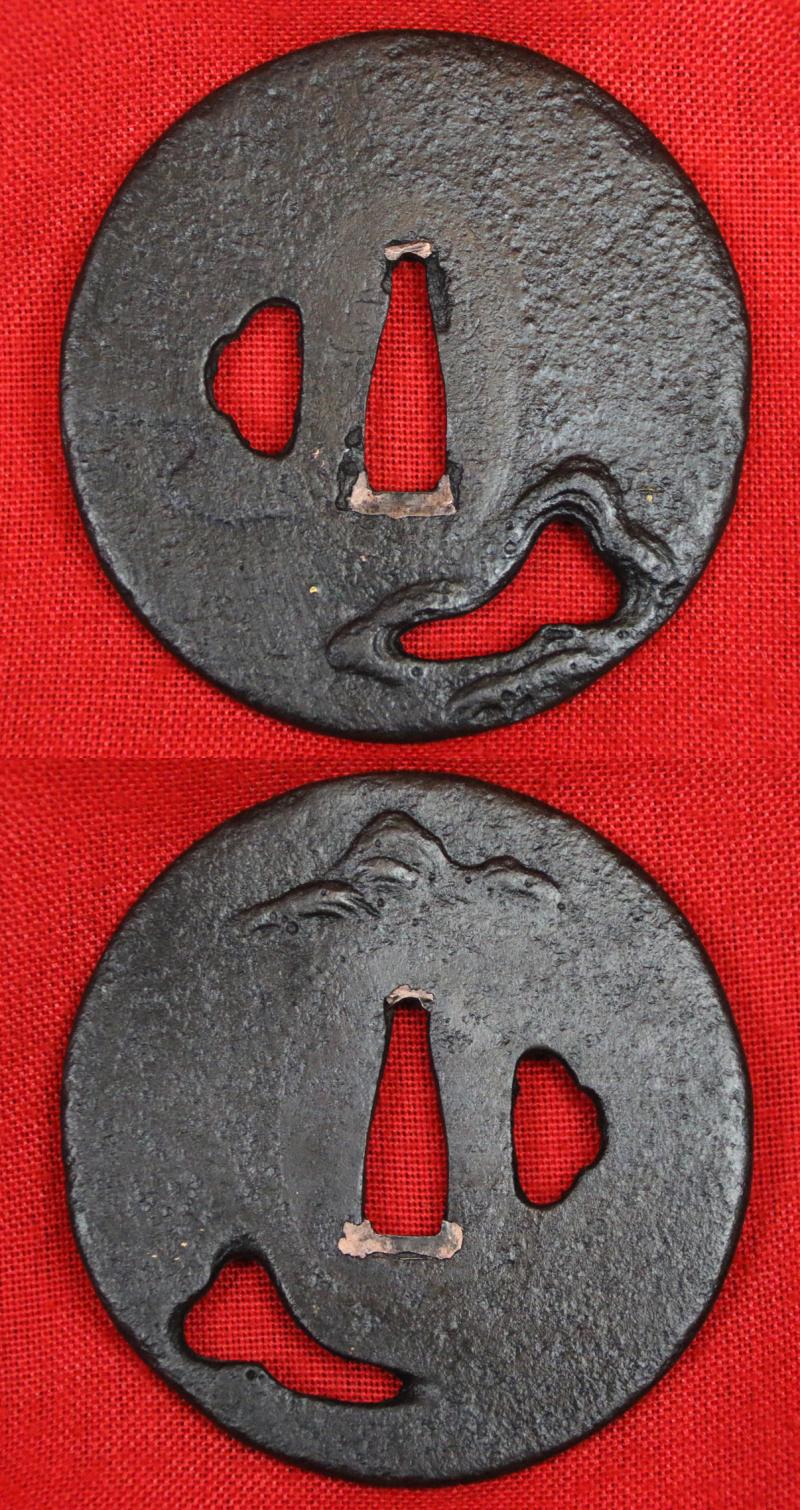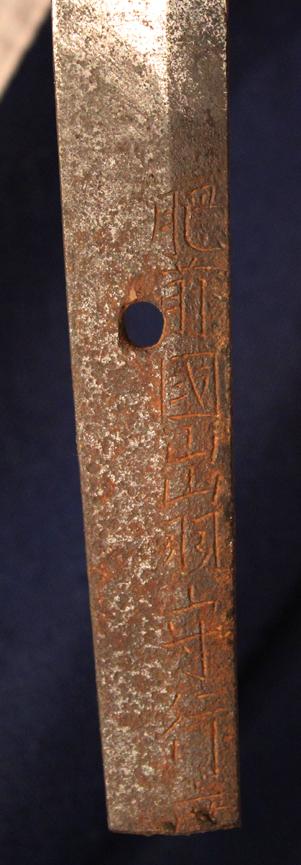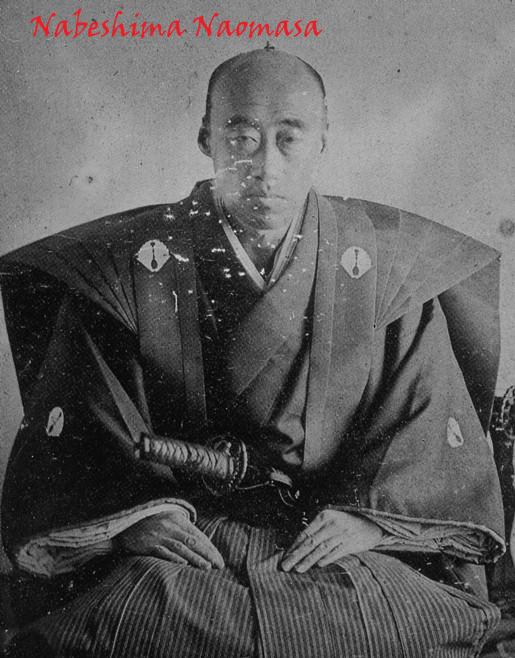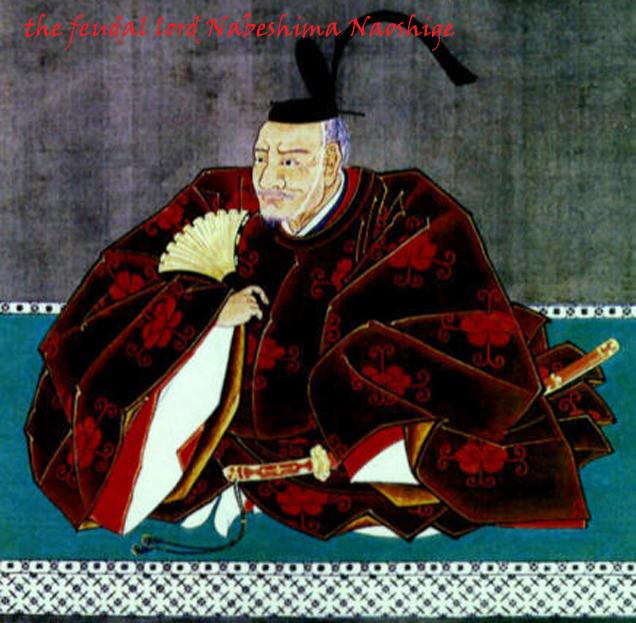An Amazing Samurai Long-Sword Katana.Signed, Hizen kuni Dewa no kami Yukihiro Circa 1670 Made For the Nabeshima Clan. Yukihiro Acquired the Title of Dewa Daijo in 1648 & Was Ranked Up to Dewa (No) Kami in 1663. (Governor of Dewa Province)
A fabulous, signed, samurai katana of the Nabeshima clan lords. Likely, for such as a hatamoto (旗本, "Guardian of the banner") who was a high ranking samurai in the direct service of the Tokugawa shogunate of feudal Japan.
Hatamoto:
This term literally means "bannerman" and referred to the samurai who served directly under the Tokugawa Shogunate. They were a higher-ranking class compared to the Gokenin, who were the lower vassals.
Daimyo were powerful feudal lords who ruled their own domains and held significant power in Japanese society.
Karo, or clan elders, were the highest-ranking positions among a feudal lord's samurai retainers. They played a crucial role in managing political and economic affairs.
Overall in superb condition, and an absolute corker of an early samurai sword
All original Edo fittings to compliment the blade. A sword made circa 1670, with fine iron Higo school mounts with pure gold inlaid Imperial chrysanthemum mon to the fushi and kashira. Round iron signed Edo tsuba. Original Edo period urushi lacquer saya.
Yukihiro was a swordsmith of Hizen province, and as we believe this sword was made by him around 1670, he was making his swords for the Nebeshima at this time, so we believe it is very likely this was created for a high ranking samurai of that family clan, possibly such as a hatamoto. .
He was the Second son of Hashimoto Yoshinobu.
Yukihiro acquired the title of Dewa Daijo in 1648 and was ranked up to Dewa (No) Kami in 1663.
He travelled to Nagasaki to learn under Hisatsugu and Tanenaga who were highly informed about western steels brought to Japan by the Dutch. Yukihiro also studied Bizen-den style under the swordsmith that belonged to the Ishido School and sometimes added the character Ichi to his signature. Later he became a retained swordsmith of the Nabeshima family and lived in Nagase town. He passed away in 1683, aged 66. The clan controlled Saga Domain from the late Sengoku period through the Edo period.
The Nabeshima clan was a cadet branch of the Shoni clan and was descended from the Fujiwara clan. In the late 12th century, Fujiwara no Sukeyori, a descendant of Fujiwara no Hidesato in the 9th generation, received the title of Dazai Shoni (equivalent to that of vice-governor of the military government of Kyushu) from Shogun Minamoto no Yoritomo, and the title became the family name.
The clan played an important role in the region as early as the Muromachi period, when it helped suppress opposition to the Ashikaga shogunate's control of Kyushu. It did not take the name Nabeshima, however, until the late 15th century, when Shoni Shigenao established himself at Nabeshima in Hizen province (today part of Saga City, Saga prefecture). Later, in the Sengoku period (1467-1603), the Nabeshima were one of a number of clans which clashed over the island. The Nabeshima sided with the Ryuzoji clan against the Otomo clan, though this ultimately ended in failure and the death of Ryuzoji Takanobu at the 1584 battle of Okita Nawate. Several years later, however, the Nabeshima recovered power and prominence by aiding Toyotomi Hideyoshi in his 1587 invasion of Kyushu; Nabeshima Naoshige was granted the region of Saga as his fief, as a reward for his efforts. Naoshige also contributed to Hideyoshi's invasions of Korea in the 1590s.
The clan initially aided Ishida Mitsunari against Tokugawa Ieyasu in the Sekigahara Campaign in 1600. However, they switched sides to support the Tokugawa, who were ultimately victorious, before the campaign had ended, battling and occupying the forces of Tachibana Muneshige, who was thus prevented from contributing directly to the battle of Sekigahara. Though regarded as tozama daimyo ("outside" lords), and assigned particularly heavy corvee duties, the Nabeshima were allowed to keep their territory in Saga, and in fact had their kokudaka increased. The clan's forces served the new Tokugawa shogunate loyally in the years which followed; they remained in Kyushu during the 1615 Osaka Campaign as a check against a possible rebellion or uprising by the Shimazu clan, and aided in the suppression of the Shimabara Rebellion of 1637. In recognition of their service, members of the clan were granted the prestigious family honorific name of Matsudaira in 1648, Matsudaira being the original Tokugawa family name, the ruling Shogun of Japan for almost 300 years.
Samurai endured for almost 700 years, from 1185 to 1867. Samurai families were considered the elite. They made up only about six percent of the population and included daimyo and the loyal soldiers who fought under them. Samurai means one who serves."
Samurai were expected to be both fierce warriors and lovers of art, a dichotomy summed up by the Japanese concepts of bu to stop the spear exanding into bushido (the way of life of the warrior) and bun (the artistic, intellectual and spiritual side of the samurai). Originally conceived as away of dignifying raw military power, the two concepts were synthesised in feudal Japan and later became a key feature of Japanese culture and morality. The quintessential samurai was Miyamoto Musashi, a legendary early Edo-period swordsman who reportedly killed 60 men before his 30th birthday and was also a painting master. Members of a hierarchal class or caste, samurai were the sons of samurai and they were taught from an early age to unquestionably obey their mother, father and daimyo. When they grew older they may be trained by Zen Buddhist masters in meditation and the Zen concepts of impermanence and harmony with nature. The were also taught about painting, calligraphy, nature poetry, mythological literature, flower arranging, and the tea ceremony.
Very long 29.75 inch blade from tsuba to tip.
THE LANES ARMOURY, THE PREMIER HOME OF ORIGINAL AND AFFORDABLE ANCIENT ANTIQUITIES & ANTIQUE COLLECTABLES IN BRITAIN.
The Lanes Armoury, is world renown as Britain's favourite specialist collectors shop, and also a font of historical and educational information that is detailed with every single item. We detail each piece alongside its historical context, either generic or specific, for those that may wish to read, learn, or be informed, as opposed to simply acquire collectable items. We are probably one of the oldest companies of our kind in the whole of Europe and we have been established through generations, as specialists in armoury, military antiques, militaria collectables, and specialist books, since the early 1900’s, and thus we have continued to be one of the largest in the world today. We are also very pleased to know we are also studied and read by academics and students from hundreds of universities around the world, by those that are interested in not only British but worldwide history.
For this reason we are also well known to be a learning and researching website for students of history around the world.
Everyday we are contacted by historians that wish to make contributions to our detailed information for our pieces, and to thus add to our constant dedication to impart historical knowledge, that may be unknown to many of our millions of viewers.
As once told to us by an esteemed regular visitor to us here in our gallery, and the same words that are repeated in his book;
“In these textures lies an extraordinary and unique feature of the sword - the steel itself possesses an intrinsic beauty. The Japanese sword has been appreciated as an art object since its perfection some time during the tenth century AD. Fine swords have been more highly prized than lands or riches, those of superior quality being handed down from generation to generation. In fact, many well-documented swords, whose blades are signed by their makers, survive from nearly a thousand years ago. Recognizable features of the blades of hundreds of schools of sword-making have been punctiliously recorded, and the study of the sword is a guide to the flow of Japanese history.”
Victor Harris
Curator, Assistant Keeper and then Keeper (1998-2003) of the Department of Japanese Antiquities at the British Museum. He studied from 1968-71 under Sato Kenzan, Tokyo National Museum and Society for the Preservation of Japanese Swords
Overall 39 inches long in saya, some natural age surface thinning.
Code: 25760
7250.00 GBP





